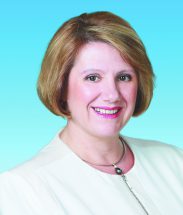
As states like NSW overhaul professional development of councillors and mayors, new data has shed light on the training needs of elected representatives in Victoria.
A new survey commissioned by the Municipal Council of Victoria (MAV) has underscored the breadth of occupations held by councillors – including as managers, farmers, directors and administration.
The census data for 2017, which was collected from 336 councillors across 79 councils, found that two-thirds of the state’s councillors work in paid employment or are self-employed.
The average councillor is male, aged over 46 and married or living in a de facto relationship, the survey showed.
While elected members’ varied professional backgrounds reflect the diversity within electorates it also illustrates the challenge of consolidating knowledge of the role of local government among councillors.
Ongoing training an issue
Director of the Institute for Public Policy and Governance Roberta Ryan says the data highlights the need for robust, ongoing training for councillors on their role as strategic, long-term leaders.
“The critical issue is to be clear about their role – that it is not about doing, but guiding,” she told Government News.
“Their role is ‘steering’ not ‘rowing’. Stay strategic. Let the senior staff implement their priorities. Get out of the detail.”

Mary Lalios, president of MAV, says that a standard understanding of the functions of local governments is one of a number of vital skills that enable councillors to support democratic processes.
“The most important skill set for any community-elected representative is to be able to engage with the community, be responsive, act where you can and have empathy with residents’ concerns.
“It is important to be able to understand how organisations work and how budgets and community plans are developed and delivered,” Cr Lalios said.
Similarly, in NSW, the state’s Office of Local Government has acknowledged that consolidating knowledge among elected members is an ongoing process.
“The NSW Government recognises that mayors and councillors come from diverse backgrounds and professions, bringing different skills and insights to their roles,” a spokesperson said.
“This is one of the strengths of local government. However, few new mayors or councillors have extensive knowledge of local government and their roles and responsibilities when they are first elected.”
New regulations around induction
As part of improving training standards among local leaders, in 2016 NSW’s OLG amended the Local Government Act 1993 to ensure councillors “make all reasonable efforts to acquire and maintain the skills necessary to perform the role of a councillor.”
This reform paved the way for regulations which support inductions and professional development for councillors.
The OLG is currently finalising the proposed regulations for induction and other professional development for elected leaders, which it’s hoped will help councils develop induction and ongoing professional development.
According to the OLG, councils’ induction and professional development programs will consist of three phases – one for prospective candidates, one for incumbent mayors and councillors and an ongoing professional development program over the term of their leadership.

As part of the changes, councils will be responsible for reporting on their induction and professional development activities and will need to note on their websites whether or not they participated.
Professor Ryan also noted the need for greater focus on ensuring adequate funding is allocated towards ongoing training.
“They are reluctant to invest time and money – they fear their communities will not see the value in this. We need to argue more broadly the value of investing in governance training for councillors,” she said.
Elsewhere, the MAV survey data revealed that an increasing number of councillors have completed university, and that 2017 saw the greatest representation of councillors with a disability since 2006, 2009 and 2013.
Other MAV census findings at a glance:
- the majority of councilors earn above $52,000 per year (excluding councillor allowances)
- Women have higher levels of postgraduate qualifications than male councilors
- Almost 50% of women have caring responsibilities compared to less than 30% of male councilors
- More than 30% of councillors had one or more parents born overseas
- More than 30% of councillors identify with no political party, compared to 12 per cent in 2009.
Comment below to have your say on this story.
If you have a news story or tip-off, get in touch at editorial@governmentnews.com.au.
Sign up to the Government News newsletter.
Most read
Scathing report finds little has changed at PwC
Qld council welcomes progress on massive battery system
‘Local’ procurement turns out not to be so local, committee hears
Another report finds local government falling down on cyber security
MoG changes see regions, investment return to NSW Premier’s Department

